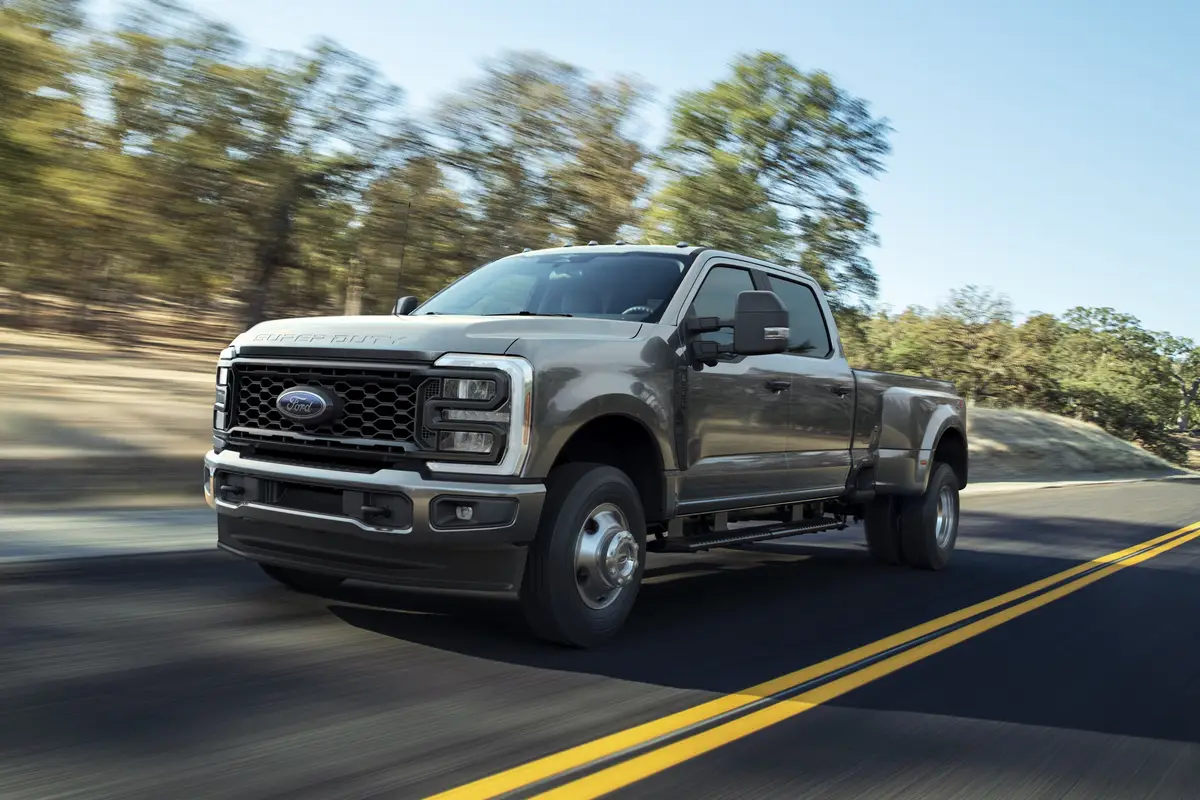chicagotribune.com's view
Four-door sedans don`t have to be dull. Pontiac proved that a year ago with the Bonneville SE, a sports version of the ordinary looking and performing H-body, full-size, four-door sedan.
For 1988 Pontiac has taken the SE a step and another S further in bringing out the SSE.
Typically, an automaker focuses on styling or performance but not both in the same machine. With the SSE both come in the same package.
The car suffers one problem, induced by Pontiac. In 1982 Pontiac took the easy way out of downsizing by dropping the full-size, rear-wheel-drive Bonneville and putting the Bonneville name on the midsize, rear-wheel-drive LeMans. Rather than say it was dropping its big car and renaming its midsize car, Pontiac said it shrank the Bonneville while gas prices were skyrocketing. Then when gas prices eased and people wanted bigger cars again, Pontiac in 1983 brought out the rear-wheel-drive Parisienne, a thinly camouflaged full-size Bonneville. The Parisienne was dropped after 1986 and the current smaller, front-wheel-drive Bonneville appeared.
Confused? Everybody was, and that`s one reason the new Bonneville line has had trouble winning back a following.
“There was more of a transition in bringing out the new Bonneville than we expected,“ said Michael Losh, Pontiac general manager, in an interview. “We had the full-size car, then put the name on the midsize car, then we had the Parisienne. It`ll take time to get back to where we should be. The new Bonneville was so good we underestimated the sales job we had to do. We counted on that car to do too much on its own. We`ll push it harder in 1988.“ The SSE attracts immediate attention from the aero ground effects plastic extending around the lower body and blending with the front and rear body- colored plastic facia bumpers. The wheel well extensions act as mud guards to keep dirt and stones from bouncing off the lower body as well.
Up front, the grille is body colored. We drove a maroon model with maroon grille set off by a gold Pontiac crest. Nifty touch. In back, a spoiler housing the third brake light rests on the deck lid.
The package was completed with maroon cast aluminum wheels, wide body side moldings, heated and body colored outside rear-view mirrors and fog lamps in the air dam below the bumper facia.
Inside, however, Pontiac went a bit overboard. Every power accessory known to man is standard, which is good. But each is activated or deactivated by a host of buttons, dials and knobs, which is confusing. The owner`s manual is a must to find out how all the systems work.
In what has become a Pontiac hallmark, there`s also two sets of radio controls, one in the instrument panel, the other in the steering wheel hub. A clever touch, but though there are 12 buttons for everything from mute to fade, the most important one-“On/Off“-is missing from the wheel.
The cloth-c overed front bucket seats are wide and comfortable. Winged sides provide good long-distance or sharp-cornering support, but the seats have inflatable inner bladders. Buttons in the center console inflate a bladder for lower, middle or upper back support. The inflation is swift-and harsh, like a board jolting you in the back. The seats are ideal only for sadomasochists or chiropractors looking for business.
Huge rear seat headrests are another annoyance and obstruct rear vision. They should be smaller or eliminated.
The SSE is a fairly active machine for a four-door sedan. For 1988 General Motors Corp. has come up with a higher output version of the 3.8 liter V-6 engine called the 3800 that`s teamed with a 4-speed automatic overdrive. It develops 165 horsepower whereas the 3.8 was limited to 150 h.p. and you`ll notice the extra oomph. To reinforce the performance impression, a rumble was designed into the exhaust at initial acceleration.
The SSE also has a “road car suspension,“ which means speed sensitive power steering (the higher the speed, the lower the power assist), four-wheel antilock brakes, MacPherson front and rear struts and stabilizer bars, electronic ride control to compensate for loads and 16 inch Goodyear Eagle GT+4 all-season tires.
It all adds up to better than average ride and handling and the ability to take corners and turns with minimal body roll or sway while traveling over twisting, hilly Wisconsin and Michigan side roads. However, either the speed sensitive power steering is a bit too stiff at low speeds or the four-wheel steering Honda Prelude (Autos-Monday, Sept. 28) we test drove spoiled us. It seemed the Bonneville wheel took more than normal effort in parking situations or simple turns at intersections.
The feature most appreciate was the antilock brakes. We didn`t have to use them to bring us to a straight, quick stop in a panic situation on dry or wet roads. But knowing they`re there is an insurance policy that pays huge dividends in peace of mind.
Pontiac is working on adding four-wheel drive to the SSE soon. With all- wheel drive plus antilock brakes, you have most potential problems covered.
Standard in the SSE are power brakes, steering, door locks, windows and seats; air conditioning; AM-FM stereo with cassette and six speakers; cruise control; leather wrapped tilt steering wheel; electric rear window defogger; floor mats; electric compass; driver information center and a speedometer that registers to 120 miles an hour.
The electric compass on a dash screen tells you the direction you`re traveling. The driver info center blinks on messages, such as that we were low on fuel and the odometer just recorded 3,000 miles and it was time to change oil and filter. You`ll seldom use the compass but it reserves a space in the dash panel for more important electronically activated messages to complement the driver info center. The purpose of the 120 m.p.h. speedometer is psychological to give you the impression of speed in reserve.
The only options are leather seats at $379, antitheft system $150 and electric sunroof at $1,230.
The SSE starts at $21,879, which compares with $16,299 for the SE and $14,099 on the base Bonneville LE for 1988.
Latest news



